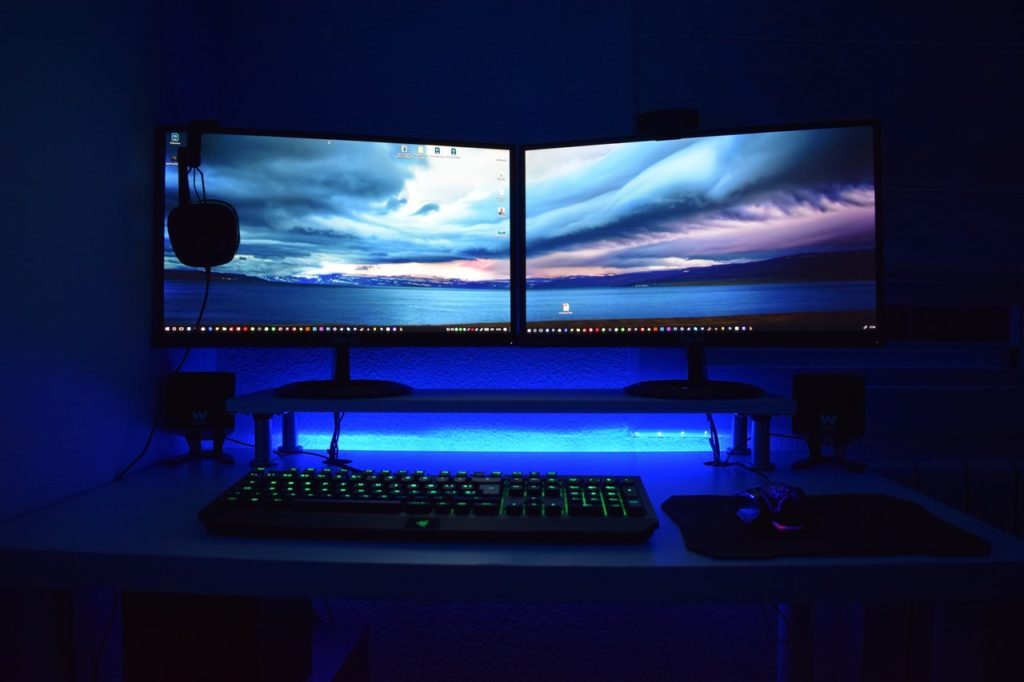Through all its flaws, the human eye can be incredibly precise and critical. Especially when dealing with images you shot yourself. Off colors, a washed out look or a slightly cool temperature can be maddening. So, when it comes to getting your eye to agree with the images you see on an editing monitor, it’s important to start right.
That’s where learning how to calibrate a monitor for editing comes into play.
Calibrating monitors can help you maintain accuracy of colors and lighting as you transfer photos and/or videos from your camera to your computer. But, many people don’t calibrate their monitor. Instead, they buy one of the best high definition monitors for editing that they can find, and think the job is done.
Wrong!
Keep reading to learn how you can calibrate a new (or old) monitor for editing images of all types.

Calibrating a Monitor for Photo and Video Editing
Calibrating a monitor isn’t all that difficult. But it is another step in the process. And that step can feel tedious if you’re eager to just get going. Trust us, it’s best to slow down and do things the right way.
The process for calibrating your monitor will be slightly different depending on if you’re using Mac or Windows. First, here are the settings we’ll be paying attention to during calibration.
Focus on These Settings to Calibrate a Windows or Mac Monitor
Levels
The range of blacks and whites on a monitor is extremely important for photo and video editing. That’s because the difference between the two is the “dynamic range”. A narrower dynamic range and there will be less detail in the shadows and highlights. These levels are more commonly referred to as contrast (white level) and brightness (black level).
Gamma
We’ll also be looking at gamma settings during calibration. The gamma number informs us on the pixel luminance of a given monitor. Shadows lose their detail with a too-high gamma. This is because a high gamma can crush blacks. And a too-low gamma washes out the highlights. Images may appear far too bright.
Grayscale or Color Temperature
Adjust your monitors white point to fix the grayscale (or color temperature). Every monitor has a specific color space (or color gamut) that it is capable of displaying. And before getting into those colors in your editing, it’s important to find the standard white point unless you want too-cool or too-warm looking images all the time. D65 (6500 K) is the traditional color temperature editing monitors should be at.
Also, having a color temperature be slightly off affects more than whites in your images. Other colors may appear a hue that you did not intend if this setting is off even a little.
Color Gamut
Every display has a specific color gamut that it is capable of displaying. And the two most common gamuts for editing monitors are sRGB and Adobe RGB. So, a key part of the process is making sure the color range is appropriate for the monitor and the footage being edited.
Now that we know what we’ll be playing with, let’s finally check out the process. Here’s exactly how to calibrate a monitor for photo or video editing.
Basic Step-by-Step Guide to Monitor Calibration
Before getting started with adjusting any levels of the settings mentioned above, it’s important to just go through a little ‘warm up’ drill.
Calibration ‘Warm Up’
This is the easiest part of the process. But, even though it’s easy, it is necessary. Don’t move on to the calibration settings before completing these 4 steps!
- First, turn your monitor on and let it sit for a half hour or so. This warming up period helps achieve the most accurate readings.
- Next, pick a picture mode. Go with something pretty neutral. It shouldn’t be overly dark nor overly bright. Standard is usually a good starting point.
- Then, go into the color temperature settings. Choose a setting that allows you to individually manipulate the RGB sliders. Usually settings like “Custom” or “User” are available.
- Finally, go into your gamma. On Mac, start with a 1.8. Windows users can start at 2.2.
Now you’re ready to get into the good stuff.

Diving Into Calibration Settings
Now, we’ll get into specifics of calibration. These steps can be more advanced and we’ve done our best to simplify it. If you want more detail, this post at Tom’s Hardware was very useful in putting this post together. In it, you’ll find the various test patterns and tools that can help aide you through a monitor calibration. Also, this post goes way more in-depth on everything below and above this point.
Anyway, here is the simplified version!
- Adjust your levels: First is adjusting contrast and brightness (or levels). Find a grayscale test pattern online (Tom’s Hardware above is a great resource). Adjust your monitor contrast and brightness until all steps in the pattern can clearly be seen.
- Get your gamma right: Next is the gamma. But adjusting a monitors gamma is a more involved process than adjusting the levels. You’ll need help in the form of a meter (again, refer to Tom’s Hardware for the necessary tools). In this step, the goal is to make sure that at no brightness is the gamma dipping or spiking too hard. Some monitors may not allow for gamma adjustments and you’ll just have to continue to step 3.
- Fix the color temperature: Then, move on to color temperature. Like step 2, you’ll need outside help for this part. As mentioned above, adjusting color temperature is all about getting the white point right. So, in this step, you’ll be making sure that your white point is where it’s supposed to be. Some graphs (again, provided at Tom’s Hardware) allow users to simply move RGB levels until the square (where your levels are now) line up with a dot (where your levels should be).
- If necessary, adjust monitor color: Finally, we come to the color gamut. Similar to step 2, many monitors may not allow users to adjust the color gamut. For most readers of this post, adjusting color range won’t even be a possibility. If it is, and you are eager to do it, I will for one final time link to the post on Tom’s Hardware where this (and everything else in this post) is covered in extensive detail.
So there you have it! You’ve just calibrated your monitor to better display your photo and/or video. And now it’s time to edit.
But one last question: what color grading software will you be using?
